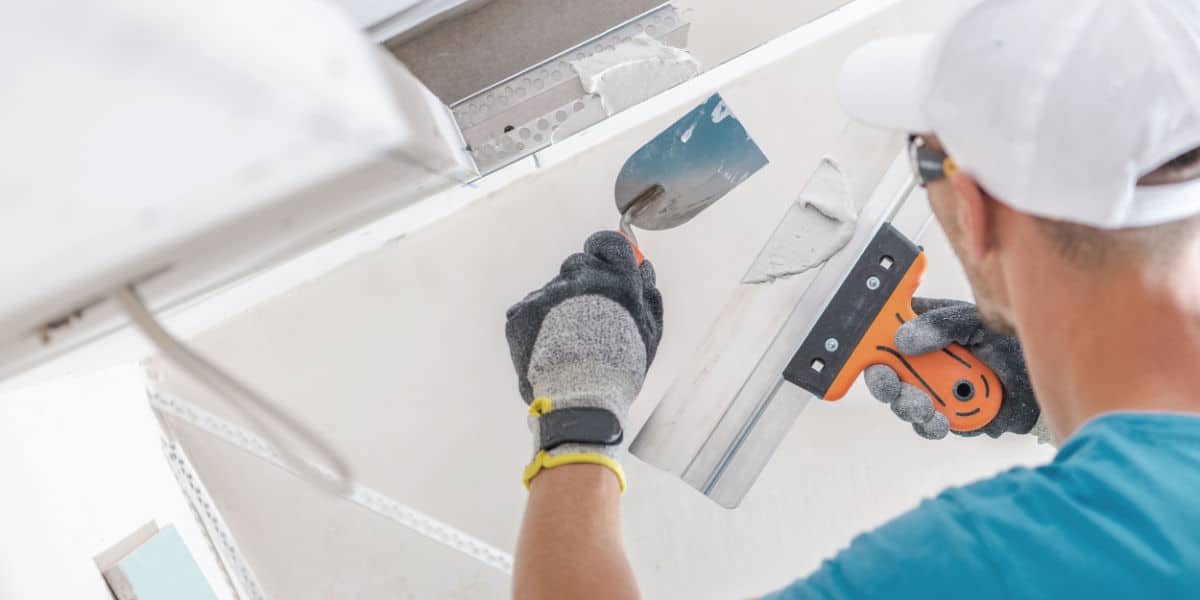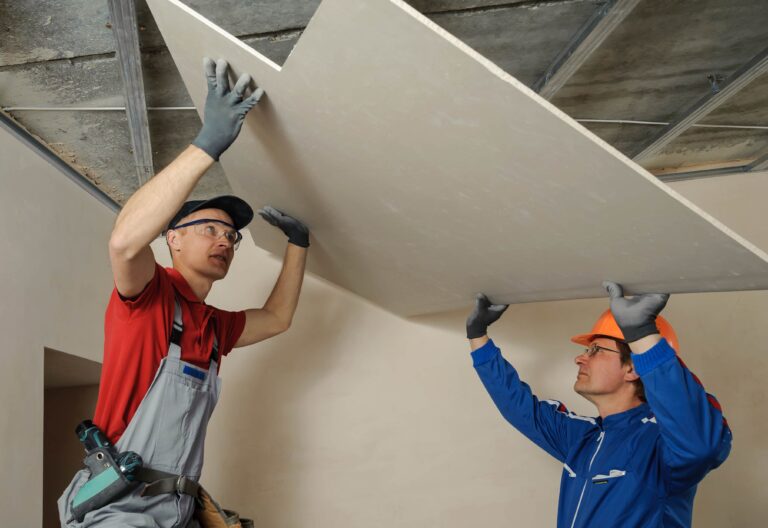Comprehensive Drywall Contractor Support for New Builds
Comprehensive Drywall Contractor Support for New Builds
Blog Article
Drywall Installment Made Easy: Tips for Perfect Results
Drywall installation is typically regarded as a difficult task, yet with the best approach and knowledge, it can come to be a convenient venture. Choosing quality materials and preparing the installment location are important very first steps that set the structure for success. In addition, grasping techniques for reducing, hanging, and completing drywall can substantially affect the outcome. As we check out these important tips, you might find that also the smallest changes in your strategy can cause remarkably boosted results, leaving you to take into consideration exactly how these practices can change your following job.
Choosing the Right Materials
Picking the appropriate materials for drywall setup is critical to accomplishing a sturdy and aesthetically pleasing surface. drywall installation. The main part, drywall sheets, usually can be found in various thicknesses, with 1/2-inch sheets being common for indoor walls. For locations calling for additional wetness resistance, such as shower rooms or cooking areas, think about making use of eco-friendly board or concrete board, which are specifically made to withstand humidity

Furthermore, selecting the best fasteners-- either nails or screws-- is essential for securing the drywall to the framework. Drywall screws are usually preferred for their holding power and minimized danger of popping. Think about the finishing touches such as primer and paint, which not only enhance the look however also protect the drywall from moisture and wear.
Preparing the Installment Area
Prior to beginning the drywall installment process, it is crucial to prepare the installment area extensively. A clean work space reduces the threat of damage to existing products and enables for efficient motion throughout installation.
Following, inspect the walls and ceiling for any kind of flaws, such as cracks, holes, or mold and mildew. Address these concerns in advance; spot any type of problems and allow adequate time for repair work to completely dry. Additionally, ensure that electric outlets, switches, and plumbing are effectively positioned and represented, as this will certainly influence drywall placement.
Take into consideration the ecological problems. A steady temperature level and humidity level are important for ideal attachment and performance of the drywall materials. If needed, make use of a dehumidifier or heating system to develop ideal problems.
Trimming and Hanging Drywall
The secret to effective drywall setup lies in the accurate cutting and dangling of the panels. Begin by determining the space accurately, considering try these out any kind of blockages such as electric outlets or home windows. Make use of a straight side and an utility knife to rack up the drywall along your dimensions, then snap it along the racked up line for a clean break. For even more detailed cuts, such as around electrical outlets, a drywall saw can be used for precision.

Always work from the top down and delegated right, guaranteeing that you keep a staggered pattern to enhance security. Properly hanging the drywall sets the structure for a smooth finish, ultimately causing exceptional lead to your drywall task.
Taping and Mudding Methods
While correct cutting and hanging of drywall sets the phase, the next crucial step includes understanding taping and mudding techniques to guarantee a smooth coating. Insulation is vital for reinforcing joints and stopping splits; it involves embedding tape into the applied joint substance (mud) Beginning with a top quality fiberglass or paper tape, applying the tape over the joint and pushing it into the wet mud using a taping knife, making sure no air bubbles continue to be.
As see soon as the tape remains in place, apply a thin layer of joint compound over the tape, feathering the edges to produce a smooth shift to the drywall surface. Enable this layer to completely dry totally prior to sanding it gently to get rid of blemishes. Repeat this procedure, using added layers of mud as essential-- generally two to three coats-- while gradually widening the application area with each layer to achieve a seamless look.
After the last layer dries out, sand the surface area with a fine-grit sandpaper up until smooth. sheetrock repair fort worth. Keep in mind to wear a mask during sanding to prevent inhaling dust particles. Mastering these taping and mudding techniques is critical for achieving a professional-quality coating in your drywall installment
Completing Touches for Perfection
Accomplishing a flawless drywall installation surpasses mudding and taping; it finishes in the finishing touches that elevate the total look. These last actions are critical in making sure a professional-grade surface that enhances the aesthetics of your room.
Begin by fining sand the dried joint compound to create a smooth surface area. Utilize a fine-grit sandpaper and a sanding block or post sander for ideal control. Pay particular focus to corners and sides, as these locations have a tendency to require even more precise job. After sanding, clean down the wall surfaces with a moist cloth to get rid of any type of dirt bits, ensuring a tidy surface for paint.
Next, use a primer particularly developed for drywall. This action is important, as it assists secure the joint compound and supplies a consistent base for the topcoat. When the guide dries out, inspect for any kind of imperfections, and retouch as required.
Conclusion
In verdict, effective drywall installation hinges on the mindful option of products, thorough preparation of the installation area, and precise execution of cutting and hanging techniques. Mastery of taping and mudding processes is vital for accomplishing go to my blog a smooth surface.
Drywall setup is commonly viewed as an overwhelming job, yet with the appropriate approach and knowledge, it can become a manageable undertaking.Picking the ideal products for drywall setup is important to accomplishing a sturdy and visually pleasing finish.Before beginning the drywall installation procedure, it is necessary to prepare the setup area thoroughly. Understanding these taping and mudding strategies is important for accomplishing a professional-quality finish in your drywall installment.
In verdict, successful drywall installation pivots on the cautious selection of products, extensive preparation of the installment area, and precise implementation of cutting and hanging techniques.
Report this page